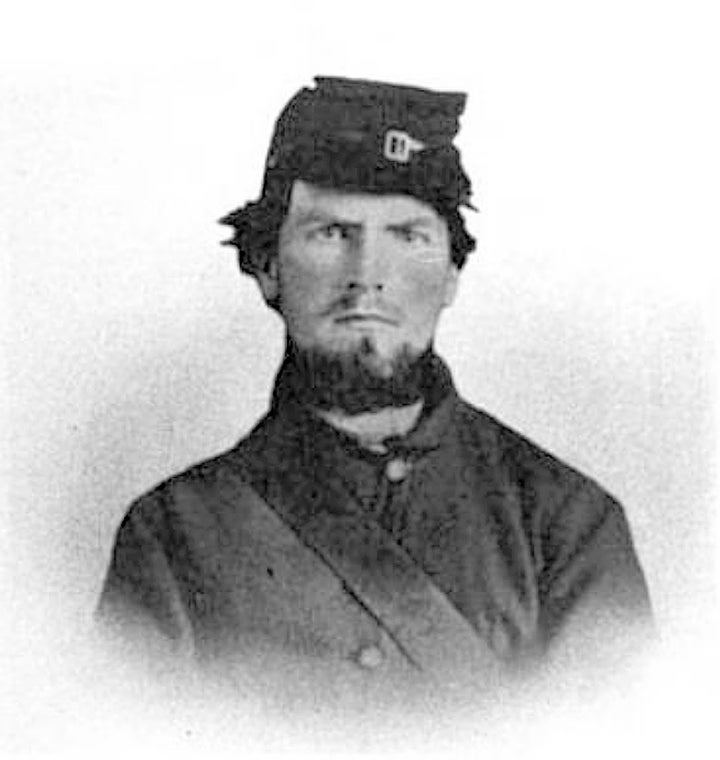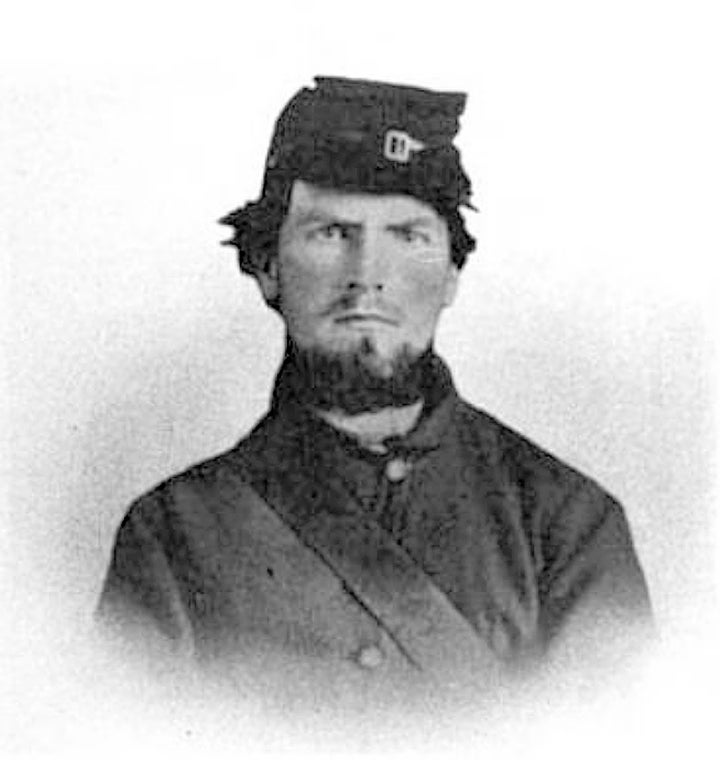Some claim that it is the gentle flapping of a butterfly’s wings that start the movement of air that leads to the formation of a destructive hurricane. Whether this is true or not, I will leave others to debate. However, an event that took place in Frankfort in August of 1862 led to the visual view we all have of the Tomb of the Unknown Soldier in Arlington National Cemetery.
Our story starts with the birth of Ivory George Kimball in Maine on May 5, 1843. Shortly thereafter, in June of 1846, Kimball’s parents relocated to Fort Wayne, Indiana. Here, Kimball attended school and upon high school graduation, he became a school teacher.
In 1862, with the American Civil War raging, Kimball enlisted as a private in Company E, 55th Indiana Volunteer Infantry. This regiment was deployed in August of 1862 to Frankfort, Kentucky, in response to the Confederate invasion of Kentucky by troops under the command of Gen. Kirby Smith and Gen. Braxton Bragg.

While in Frankfort, Kimball became seriously ill with dysentery and, as a result, experienced internal bleeding. When his regiment left Frankfort, Kimball was left behind as he was near death. Unfortunately, we do not know where Kimball was hospitalized in Frankfort nor who nursed him. We do know that on August 30, 1862, the 55th Indiana Volunteer Infantry was destroyed during the Battle of Richmond, Kentucky, and Kimball was evacuated from Frankfort when state government relocated to Louisville, just before the capital city was captured by Confederate troops.
Kimball was hospitalized in Louisville for a number of months and was eventually discharged from the Army as medically unfit. Kimball would suffer from recurring bouts of dysentery for the rest of his life. Upon being discharged from the Louisville hospital, Kimball returned to Fort Wayne, Indiana, where he married a fellow teacher, Anna Lovinia Ferris. They had seven children.
Unable to rejoin the Army, Kimball and his wife moved from Fort Wayne to Washington, D.C. While in Washington, Kimbell worked for the United States Treasury Department and attended George Washington University. In 1867, he graduated from George Washington with a law degree. Upon gaining his law degree, Kimball set up a private law practice in Washington.
In 1891, President Benjamin Harrison appointed Kimball to serve as a judge in the Police Court of the District of Columbia. He was sworn in as a judge on April 1, 1891, and held this position until April 2, 1910.
During his time in Washington, Kimball became involved in the affairs of the Grand Army of the Republic, (GAR). The GAR was the equivalent of today’s American Legion or Veterans of Foreign Wars. Membership in the GAR was restricted to those men who had served in the Union Army during the American Civil War (1861-1866).
The GAR was both a fraternal organization and a politically active organization fighting for veterans’ pensions, establishment of veterans’ care facilities and cemeteries and the preservation of Civil War battlefields like Gettysburg and Vicksburg. In 1903, Kimball became commander of the GAR’s Department of the Potomac.
Arlington National Cemetery, by the end of the 19th century, had already gained in the American consensus the mystical qualities today that still penetrates United States culture. At the time Kimball became commander of the GAR’s Department of the Potomac, the wooden amphitheater located at Arlington Cemetery was starting to have serious structural problems.
Kimball, through the GAR, began to push for a new Arlington amphitheater. He envisioned a Memorial Amphitheater built of stone, which would honor American veterans of all wars. Frederick D. Owen was chosen by the GAR to design the new amphitheater. Congress did not act upon the GAR’s push for a new amphitheater at Arlington until 1908 when they appointed a commission to study the issue.
In 1913, acting upon the Commission’s recommendations, Congress passed a bill that was later signed by President Taft, authorizing the construction of a 5,000 seat Memorial Amphitheater within Arlington Cemetery. On March 1, 1915, construction of the Memorial Amphitheater started. On Oct. 13, 1915, President Woodrow Wilson laid its cornerstone. Kimball participated in both the ground-breaking and cornerstone laying ceremonies, but did not live to see the amphitheater completed. He died May 15, 1916.
In honor of those who had given there all during the fighting in France during the War to End All Wars (World War I), on March 4, 1921, Congress approved the burial of an unidentified American serviceman from that war in the plaza of the new Arlington Memorial Amphitheater. On Nov. 11, 1921, the body of an unknown American soldier that had been brought back from France, was interred in a three-level marble tomb located on the edge of Arlington Memorial Amphitheater.
In 2021, the tomb and its setting remain a pilgrimage site for all who visit Washington, D.C. If not for the fact that Ivory George Kimball, while in Frankfort in August of 1862, was nursed back to life, the mental vision we all carry with us of the Tomb of the Unknown Soldier would be considerably different.










